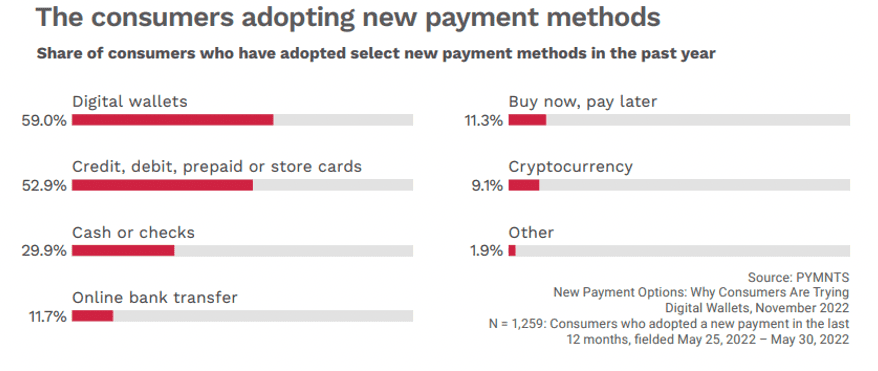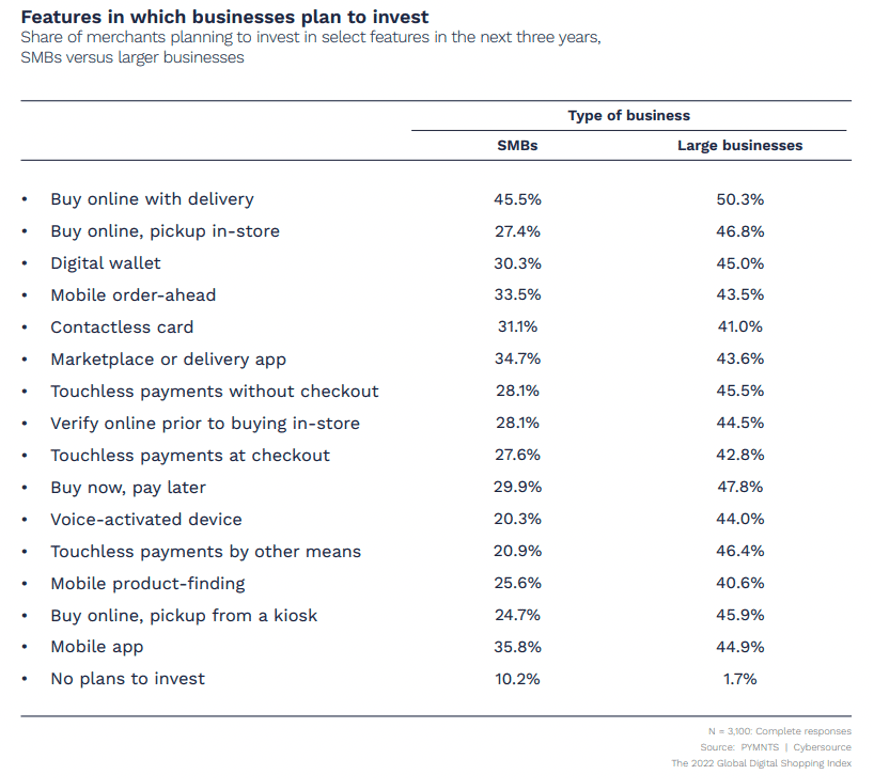Cost-Conscious Small Businesses Prioritize Digital Payments in 2023
Small businesses seeking to reduce innovation costs might consider prioritizing digital wallet offerings.
In today’s budget-conscious retail environment, small- to medium-sized businesses (SMBs) might be tempted to pump the brakes on innovations, but that can have a detrimental effect on customer loyalty and retention.
One cost-effective option is to offer expanded payment options for customers, specifically digital wallets such as Apple Pay or Google Pay.
Digital wallets are seeing increased customer use online and in-store worldwide. The PYMNTS study “New Payment Options: Why Consumers Are Trying Digital Wallets,” a collaboration with Nuvei, found this holds especially true for consumers who have adopted new payment methods in the past year.
 However, a majority of small businesses seem to be in no rush to implement this offering over the next three years, despite customers’ enthusiastic adoption.
However, a majority of small businesses seem to be in no rush to implement this offering over the next three years, despite customers’ enthusiastic adoption.
One reason for this disparity in planned customer-facing features between large and small businesses could be budget constraints. Smaller merchants simply must be choosier about their offerings. The gap in consumer demand for more digital wallet options versus small businesses willing to offer them represents an opportunity for SMBs seeking to cost-effectively build customer loyalty and revenue.
In a survey of “big retail” merchants, PYMNTS found that 70% of retail executives in the United States and United Kingdom consider digital-first tools to be necessary for customer loyalty.
In an interview with PYMNTS, Andrea Gellert, head of marketing at payments solution provider Clover, explained the importance of SMBs following big retailers’ lead in offering expanded payment options.
“SMBs, which have always differentiated themselves through a more curated and personalized experience, are competing by aiming for consistent experiences across all channels, extending personalization throughout the entire customer journey — particularly at checkout,” she said. “Additionally, for both merchants and customers alike, ensuring that payment is not a hindrance or a detractor from the buying experience is key. Offering customers more ways to pay — including contactless, cashless, BNPL, etc. — is a win-win for all.”

Online, the direct-to-consumer (D2C) sector has already seen benefits from increased digital wallet acceptance. According to the PYMNTS study “Holiday Shopping 2022: Deal or No Deal,” the use of Apple Pay for online transactions grew 63% year over year, and both Google Pay and Venmo use doubled.
Speaking with PYMNTS, Emiliano Imbimbo, head of digital issuing products and mobile payments manager for payments platform Nexi, described how adoption of Big Tech wallets are driving the Italian market.
“Because their solutions are based on cards, [digital wallets like Apple Pay and Google Pay] support the digitalization of payments through payment cards,” he said. “And thanks to the better user experience and the wider adoption they have [among] the population, we see them as a big enabler for the market.”
The relatively low cost for small businesses to implement digital wallet payments can reap big benefits in terms of attracting new customers and boosting loyalty. That may be the win-win SMBs need to carry them through 2023.
